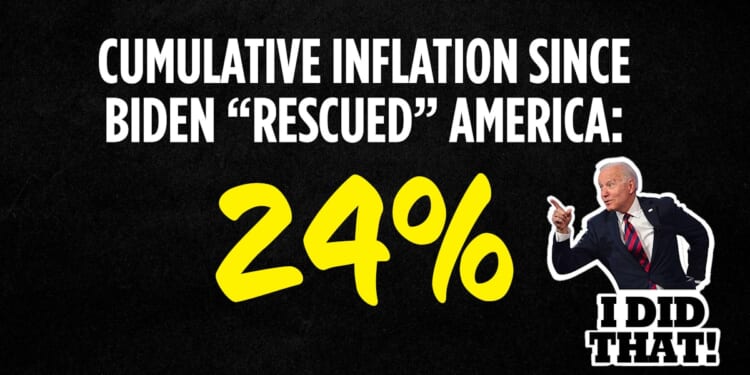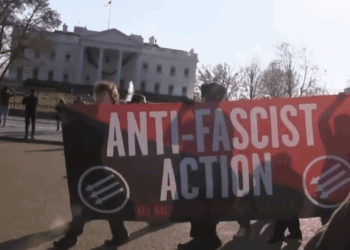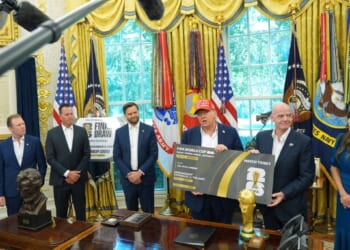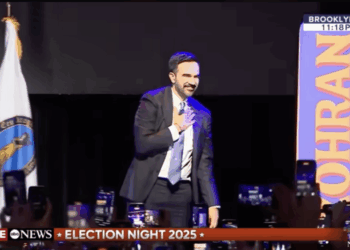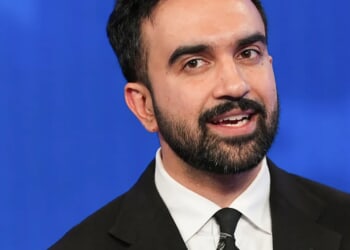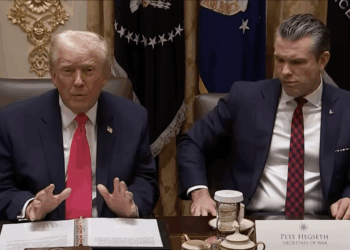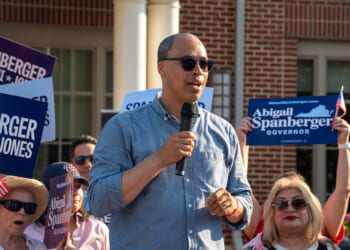Americans were spoiled in the first Trump administration (and, admittedly, through most of the Barack Obama years preceding it) with inflation that ran about 2% or less a year. In fact, the recent announcement that inflation had reached an annual rate of 3% would have been bigger news were it not for the surge in prices under President Autopen.
As has been the case for months now, media critics on both the Left and the Right are blaming President Donald Trump’s tariffs for the surging costs. “The longer the tariffs last, the more households pay,” explained the Wall Street Journal editorial board, “no matter how much the Administration claims companies or foreigners will eat the cost.” The Washington Post added, “The [inflation] report offers the only official glimpse of the economy this month amid the government shutdown, highlighting the continuing impact of President Donald Trump’s tariffs on consumers, some of which began to take effect in August.”
But both outlets, in the fine print deep down in the story, revealed that the tariffs aren’t the primary cause. Again, quoting the WSJ, “New research from the St. Louis Fed finds tariffs account for 0.5 percentage point of the 2.85% annual inflation from June to August, using the Fed’s preferred personal-consumption-expenditure index, and about 0.4 percentage point of 2.9% core inflation.” The Post also buried the lede, conceding, “Tariffs don’t fully explain the rise in inflation, which is still largely driven by a 3.6 percent annual rise in the prices of services such as housing, fuel and utilities, according to Joe Brusuelas, chief economist at RSM. Though shelter price inflation slowed in September, it was up 3.6 percent for the year.”
In essence, the media is carrying water for Democrats, who began caterwauling this summer that tariffs would bust the wallets of the middle class. As Senator Elizabeth Warren whined back in July, “For those saying we have not seen the impact of Trump’s tariff wars, look at [the] data. Americans continue to struggle with the costs of groceries and rent — and now prices of food and appliances are rising.”
Yet, as both the WSJ and WaPo have admitted, tariffs are a small contributor to the inflationary increase. Let’s look at some other items that are surging — perhaps, in part, due to tariffs, but not necessarily.
Kelley Blue Book, which gauges the average price of both new and used cars, announced last week that, for the first time, the average new car price edged above $50,000 — a 3.6% increase year-over-year. Tariffs are partly to blame, but demand for new EVs purchased before federal tax subsidies expired in September also played a role. That price jump is hollowing out demand for lower-priced cars for budget-conscious consumers. “While there are many affordable options out there, many price-conscious buyers are choosing to stay on the sidelines or cruising in the used-vehicle market,” explained Cox Automotive analyst Erin Keating. Eventually, that will place inflationary pressure on the used-car market or force automakers to eat a little bit of the cost of new cars to keep sales moving.
There’s also sticker shock in the energy market, as electricity prices are surging in some areas. While consumers blame new data centers coming online, much of the increase is actually driven by needed infrastructure investments by utility providers, according to a Washington Post story detailing a study by the Lawrence Berkeley National Laboratory and the consulting group Brattle.
However, there is one caveat mentioned there by Post writer Shannon Osaka that affects states with renewable energy portfolios, like this author’s home state of Delaware: “While the researchers didn’t find a connection between overall wind and solar on the grid and higher prices, they did find that states with renewable-portfolio standards — which require a certain amount of clean energy on the grid — tended to have higher prices. In Maine, New Jersey, and Maryland, those standards raised prices by around 1 cent per kilowatt-hour between 2019 and 2024.” Can’t blame tariffs for that one, just poor government policy and environmentalists.
Nor can we chastise tariffs for the real sticker shock coming next year. Paige Winfield Cunningham of The Washington Post levels us with the bad news: “Premiums for the most popular types of plans sold on the federal health insurance marketplace Healthcare.gov will spike on average by 30 percent next year, according to final rates approved by the Centers for Medicare and Medicaid Services.”
While that sounds bad, the average “Affordable” Care Act enrollee will be able to access a health plan for less than $50 a month after receiving subsidies, “despite doomsday Democrat fearmongering and the Biden administration’s gross mismanagement of the ACA marketplaces,” said Christopher Krepich, a spokesman for the Center for Medicare and Medicaid Services. “The administration will continue to take action to stabilize the ACA market and deliver cost savings for the American people.” If the action doesn’t involve more government spending, people may be able to overcome those inflationary effects.
While tariffs are a convenient whipping boy for pro-business interests and a bone of contention from the Left and its blanket anti-Trump agenda, the truth is that they’re not the bogeyman originally feared when President Trump announced his sweeping tariff program this past spring. Subsequent negotiations and agreements with nations around the globe have generally reduced the tolls while working to open markets and encourage investment in American workers.
But let’s not forget that, since the start of the Biden administration in January 2021, cumulative inflation is over 24%. If there’s anything we should be blaming, it may be the profligate government spending at all levels, which doesn’t create much value for the economy but acts as a vacuum, sucking money out of our wallets. Let’s hope the Trump administration and Congress address that 800-pound elephant in the room.

